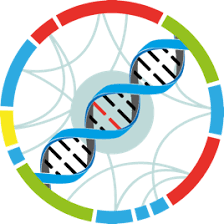Study : SIN3 LIKE genes mediate long-day induction of flowering but inhibit the floral transition in short days through histone deacetylation in Arabidopsis
Identification
Name
SIN3 LIKE genes mediate long-day induction of flowering but inhibit the floral transition in short days through histone deacetylation in Arabidopsis
Identifier
dXJuOkVWQS9zdHVkeS9QUkpOQTU0NTIyNA==
Description
We show that in Arabidopsis SIN3 LIKE (SNL)family genes encoding a scoffold protein for assembly of histone deacetylase complex, directly regulate the expression of an FT activator and three FT repressors to regulate the transition to flowering in short days and long days, respectively. Under inductive long days, SNLs including SIN3 LIKE 1(SNL1) to SNL5, function in partial redundancy to repress the expression of three AP2 family transcription factors that repress FT expression, and thus mediate long-day induction of FT expression and promote the transitiion to flowering. In contrast, under non-inductive short days SNLs act to inhibit the floral transition, partly through direct repression of a MADS box transcriptional factor that promotes FT expression. Thus, our results reveal that SNLs, through histone deacetylation, play a novel dual role for the control of flowering in the long-day plant Arabidopsis: inhibiting flowering when the day length is shorter and promoting the floral transition when days become longer than a threshold length. Overall design: Total RNAs were extracted from the aerial parts of 11-day-old seedlings of LDs grown wild type(WT) and snl1/2/3/4/5 quintuple mutant (snl1-5) (harvested at ZT5) by Rneasy Plus mini kit (Qiagen). Total RNAs (1.0μg) form each sample were used for library preparation with NEBNext Ultra Directional RNA Library Prep kit for Illumina (New England BioLabs, E7420L) flowering the manufacturers instructions. Prepared libraries were assessed for quality using NGS High-Seneitivity kit on a fragment analyzer (AATI) and quantified using a Qubit 2.0 fluorometer(Thermo Fisher Scientific). All libraries were sequenced on an Illumina HiSeq sequencer. Three biological replicated of each genotype were sequenced.
Genotype
| Accession number | Name | Taxon |
|---|
